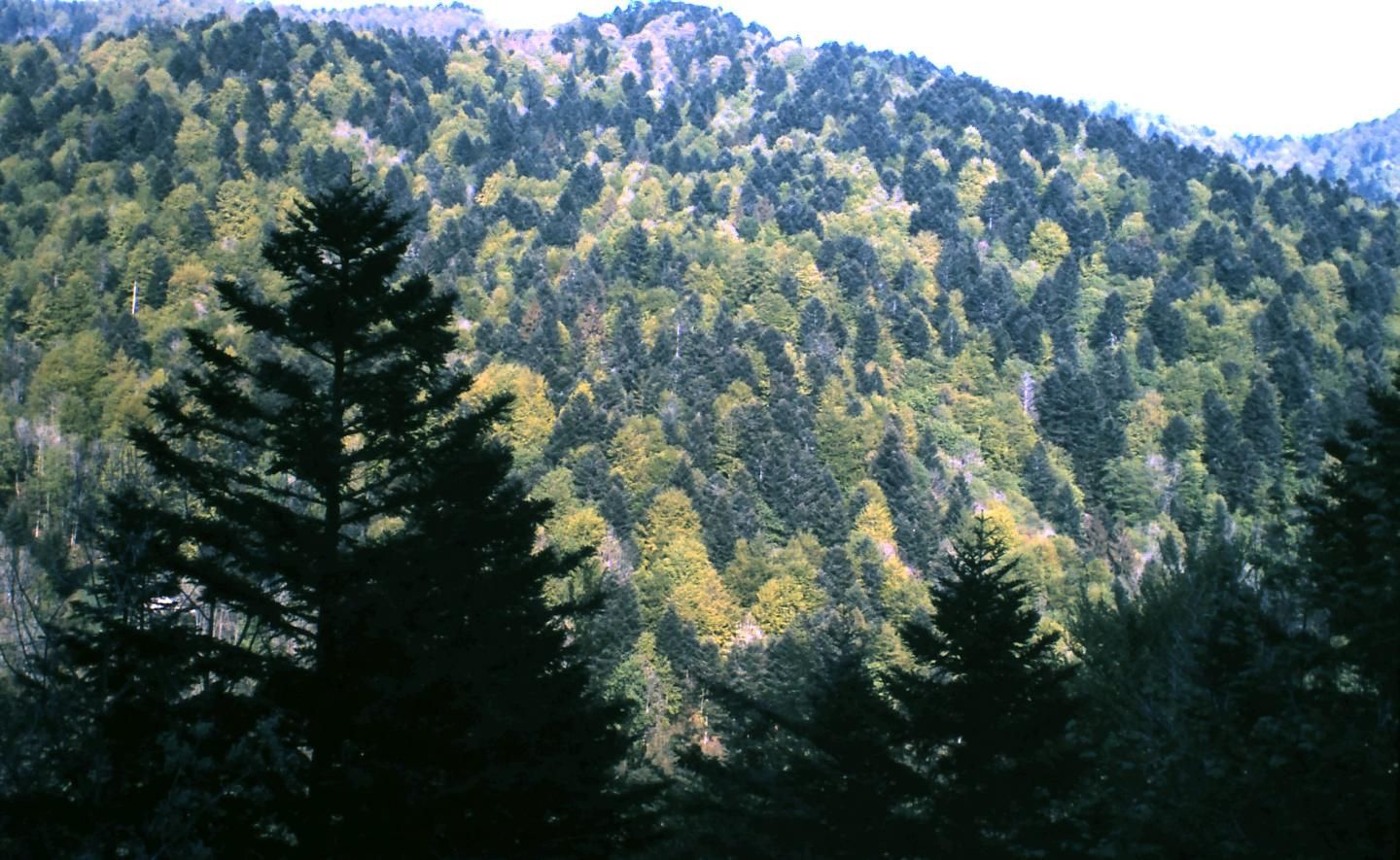
You've heard it before: Deforestation is a major contributor to climate change. To put it simply, trees store carbon, preventing it from entering the atmosphere—which means there are fewer greenhouse gases screwing with Earth's climate. And, broadly speaking, that's true. Planting trees is good for the planet. But it's more complicated than that. Research published this week took a fine-toothed comb to the issue of forest management and reforestation. And the researchers found a major tangle: It turns out we've been planting the wrong trees, for a long time. And that choice of trees has actually been making climate change worse.
In a paper published Thursday in the journal Science, researchers looked at the history of reforestation in Europe. As of 2010, 85 percent of forests on the continent were managed by humans, they write. And for nearly 250 years, forest managers have tended to prefer reforesting with more "commercially valuable" and fast-growing species of trees, like Scots pines, Norway spruce and beech trees. Two of those three "preferred" species are conifers; more often than not, they'd be used to reforest an area where broad-leaved trees once stood. According to the researchers, almost 400,000 square miles of broadleaf forest have been replaced by conifers since roughly 1850.
The conifers have needles instead of leaves, and the pigment of their needles is much darker than leaves would be. That means they absorb more solar radiation, rather than reflecting it back up to space, than leaves would. That causes the temperatures in these forests to rise, ultimately adding to warming, rather than reducing it.
"Even well-managed forests today store less carbon than their natural counterparts in 1750," Kim Naudts, of the Laboratory of Climate Science and Environment in Gif-sur-Yvette, France and an author on the paper told the BBC. "Due to the shift to conifer species, there was a warming over Europe of almost 0.12 degrees, and that is caused because the conifers are darker and absorb more solar radiation."
Uncommon Knowledge
Newsweek is committed to challenging conventional wisdom and finding connections in the search for common ground.
Newsweek is committed to challenging conventional wisdom and finding connections in the search for common ground.
About the writer
Zoë is a senior writer at Newsweek. She covers science, the environment, and human health. She has written for a ... Read more
To read how Newsweek uses AI as a newsroom tool, Click here.








